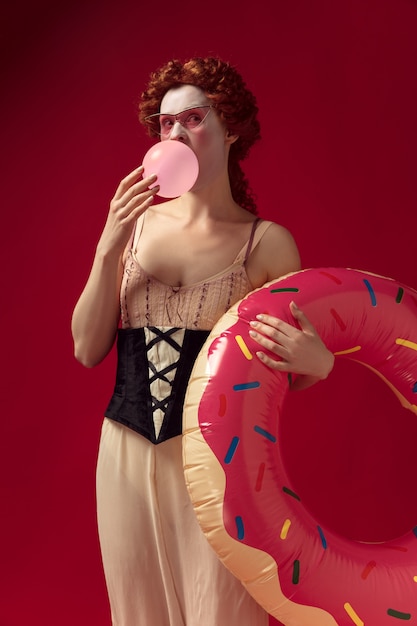
Cinderella: A Timeless Tale
Cinderella’s story has been cherished across generations, dating back to ancient China or Egypt, specifically to a tale about a Greek girl named Rhodopis who marries an Egyptian king in the 1st century BC. Over the centuries, countless variations have emerged, but they all share a common theme. The story’s core follows a young woman, often referred to as Cinderella, who must prove herself deserving in a household where she’s mistreated by her stepfamily. Typically, the tale starts with the girl’s mother passing away and a wicked stepmother taking her place, who, along with her stepsisters, diminishes the girl’s status and forces her into servitude.
In time, Cinderella is excluded from a family outing but receives help from a symbolic figure representing her late mother. This assistance allows her to attend the event where she meets and falls in love with her true love, leaving behind a slipper as a clue to her identity. Each culture’s retelling of this story, while following this basic outline, adds its unique elements, as seen in the Chinese, Perrault’s, and Grimm Brothers’ versions.
The Chinese Cinderella
Dating back to around 900 A.D., “Beauty and Pock Face” is one of the earliest Cinderella versions from China. Here, Beauty’s mother turns into a yellow cow after death, symbolizing ancestor worship, a crucial aspect of Chinese culture. Beauty is devoted to the cow, representing her deceased mother, who aids her with impossible tasks set by her stepmother. In ancient China, such tasks involved sorting hemp and separating sesame seeds from beans. The mother-cow also provides Beauty with suitable attire for outings, akin to a fairy godmother.
Instead of a grand ball, this version centers around a theater outing. Cinderella’s tiny slippers emphasize the ancient Chinese practice of foot binding, symbolizing virtue and beauty. Here, Beauty seeks a husband by allowing only a worthy scholar to pick up her slipper, inverting the traditional prince-seeking motif. Unique to this version, Beauty is killed by her stepfamily but reincarnates and returns to reclaim her place, emphasizing themes of revenge and rebirth prevalent in Buddhism.
Perrault’s Cinderella
Charles Perrault’s “The Little Glass Slipper,” written in 1697, is a much later French version that reflects the societal norms of his time. This telling focuses on Cinderella’s virtue contrasted with her stepsisters’ vanity, symbolized by their extravagant full-length mirrors. Unlike other versions, Cinderella doesn’t punish her stepsisters but arranges noble marriages for them, highlighting forgiveness and morality suitable for Perrault’s audience. Here, the fairy godmother appears without any direct connection to Cinderella’s deceased mother, symbolizing virtuous reward rather than maternal intervention. Perrault also introduces iconic elements like the glass slipper and pumpkin carriage, aligning the story with his society’s values and didactic purposes.
The Brothers Grimm Cinderella
The Grimm Brothers’ version from 1812 includes moral lessons aimed at children. It starts with Cinderella’s mother advising her to stay pious to receive divine assistance. Unlike Perrault’s tale, the father stands by, mostly passive. This version delves into deeper psychological themes, like oedipal complexities and sibling rivalry. The tree Cinderella nurtures at her mother’s grave symbolizes her growth and resilience. Birds from the tree help her complete tasks, highlighting a connection with nature and personal effort. At the ball, Cinderella’s teasing nature reflects traditional courtship, emphasized by intricate tasks like the stepsisters’ foot mutilation to fit into the slipper, symbolizing self-worth and femininity.
Ella Enchanted: A Modern Adaptation
Gail Carson Levine’s “Ella Enchanted” modernizes Cinderella for contemporary readers. Set in a different world, it maintains relatability with characters and problems that feel close to home. Ella, a spirited young woman, deals with her mother’s loss and an indifferent father, alongside the presence of an attractive prince and mean stepsisters. Unlike traditional versions, Ella becomes her own savior. Levine sends her on a quest, traditionally reserved for male heroes, granting Ella more independence and strength. She also retains the glass slipper imagery, using it to symbolize Ella breaking her spell and embracing love, transforming her into an empowered heroine contemporary readers can look up to.
Conclusion
Cinderella’s tale in its many variations offers valuable insights into the cultures and times they originate from. From the vengeful Beauty in ancient China to Perrault’s virtuous maiden and the Grimm Brothers’ moral fable, each version teaches lessons relevant both then and now. Gail Carson Levine’s modern adaptation, “Ella Enchanted,” refreshes these lessons, making the story more applicable and empowering for today’s readers. These timeless stories emphasize that beneath their fantastical surface, important themes about virtue, resilience, and self-worth remain incredibly relevant.

